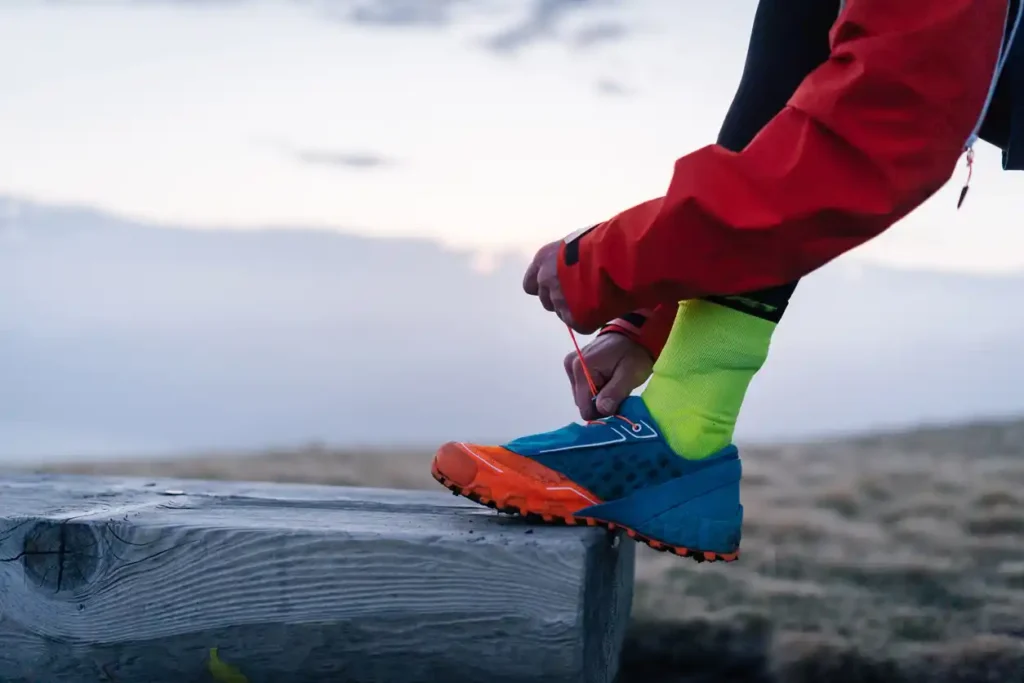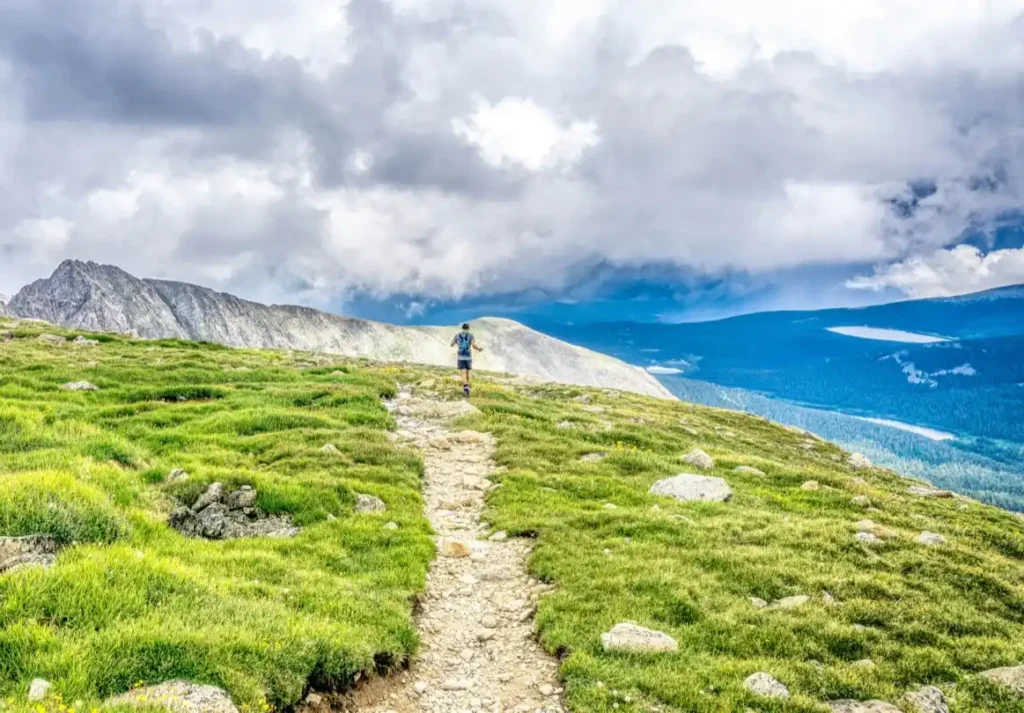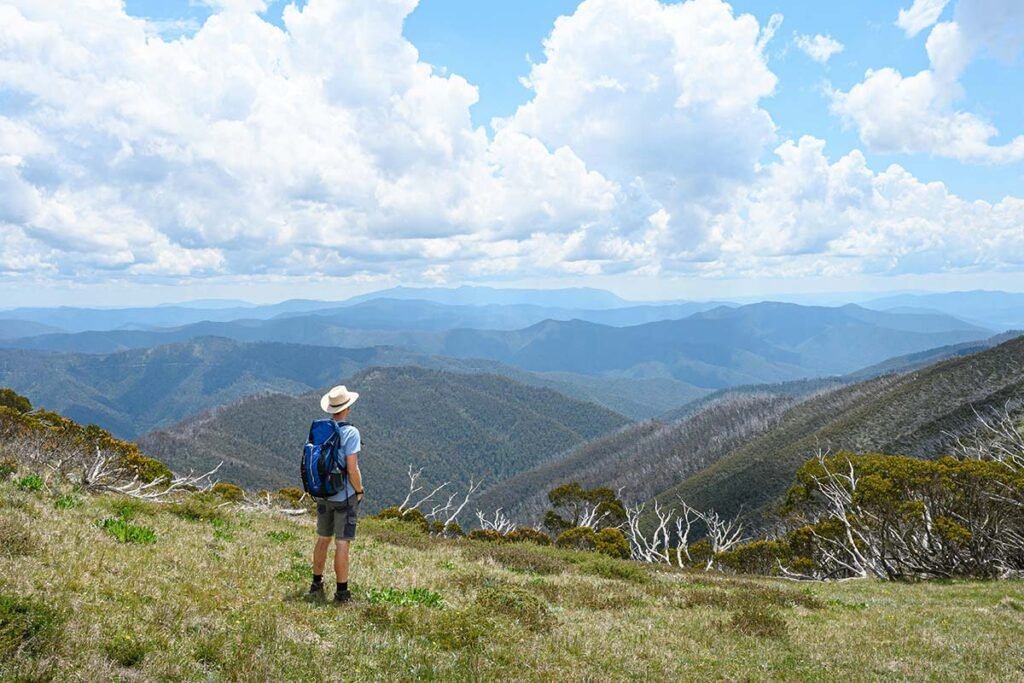Trail running is an entirely different beast to road running—from the terrain to the weather to what you need to wear to ensure you’re comfy, efficient and chafe-free. Whether you’re weaving through forest in Collie or scrambling over loose granite in the Stirling Ranges, wearing the right clothing on the trail (and taking the right trail running gear) can make the difference between feeling like a superhero and turning back early.
In this guide, we’ll cover what to wear trail running—from shoes and socks to clothing layers and overlooked accessories—along with a few clever tips straight from the pros.
Clothing: What to wear on a trail run
Beyond shoes and socks (which we cover further down), your clothing is your second skin on the trail—and it should work with you, not against you. Here’s how to layer up smart and stay comfortable across all seasons:
Shirts and base layers
Choose moisture-wicking fabrics that breathe. Synthetic blends and merino wool are excellent for temperature regulation and sweat management. Avoid cotton at all costs—it stays wet and chafes badly. For cooler mornings or high alpine runs, opt for long-sleeve lightweight layers you can strip off as you heat up.
Shorts or tights?
It depends on your terrain and comfort. Shorts offer more airflow and freedom, but tights provide better protection from scrub, sun and ticks. In colder weather, thermal leggings are a must-have.
Some runners (myself included) like compression shorts or tights for longer distance runs to reduce muscle fatigue. But train with these first instead of making a grave mistake on race day.
Jackets and outer layers
A lightweight, packable waterproof or windproof shell is worth its weight in gold. Look for jackets with underarm vents or breathable membranes for comfort during intense climbs. In cooler seasons, bring a mid-layer fleece or insulated vest you can stash in your pack.
Sun protection
Trail running down under means relentless UV exposure. A lightweight cap, good sunnies and even UPF-rated sleeves or shirts can be crucial, even on overcast days. You’ll already feel close to melting while in the heat in the middle of nowhere—no need to add serious sunburn to the list of ouchies.
Sports bras and underwear
Women should opt for high-impact, breathable sports bras that don’t chafe. Seamless, sweat-wicking underwear (for any gender) can save you from some seriously unpleasant rubbing after 20km.
Choosing the right trail running shoe

Wear the rubber meets the road, what’s on your feet matters a considerable amount in the trail running world. Assuming you’re not jumping onboard the barefoot bandwagon (we have zero problem with zero drop shoes), then you’ll want to choose the right train running shoe for you.
Some pointers for finding the perfect fit for your feet on the trail:
Grip matters
Choose shoes with aggressive tread for muddy trails or moderate grip for rocky terrain. If you’re headed overseas or to Australia’s higher terrain in winter, consider spikes. All in all, the last thing you want is to have a serious slip when you’re trying to find your rhythm on wet, muddy or snowy trails.
The right amount of cushioning
A simple way of looking at cushioning is minimalist for short runs, more cushioning for ultras. But what I won’t do is tell you that a massively cushioned trail running shoe will solve every problem—because experience has shown me that the more extreme I’ve gone with cushioning, the more problems I’ve had.
Sciatica issues, weaker glutes, ankle problems. Shoes with a tonne of foam disallow the natural striking of your foot against the ground, and also means your heel strikes the ground earlier than it would if barefoot. Just something to consider as you begin your search for the train running shoe that’ll give you the most smooth ride.
Drainage or waterproofing
If you’re running through creeks or wet trails, shoes that drain water quickly or repel it entirely are a must. You’ll want trail shoes that promote wet running because if they don’t you’ll have horrendous blisters in no time.
As an example, Hoka’s Speedgoat’s are renowned for great wet running, especially the mids which have a gore-tex upper to stop water getting into the workhorse of a shoe.
Thin or thick socks when trail running?

An age-old question in trail running circles. The choice between thin and thick socks for trail running depends on factors like weather, personal preference and the type of terrain.
Thin socks
Thin socks are lightweight and breathable, making them ideal for hot conditions. They wick moisture away quickly, reducing the risk of blisters caused by damp feet. Many runners prefer thin socks for shorter distances or well-maintained trails where impact and debris are less of a concern.
Thin socks are best for hot and humid conditions, short to mid-distance runs and runners who prefer a close-to-foot feel.
Thick socks
Thicker socks provide extra cushioning, which can be beneficial for long runs, rough terrain or colder weather. They help absorb impact, reducing foot fatigue and providing warmth in winter. However, they may retain more moisture in hot conditions, potentially leading to discomfort or blisters.
Thick socks are great for cold weather and wet conditions, long-distance and ultra running, and rocky, technical terrain where extra padding helps
The best option? A balance.
Many trail runners opt for mid-weight socks with moisture-wicking properties like merino wool or synthetic blends. Brands like Injinji, Smartwool and Balega offer socks that provide a balance of breathability, cushioning and durability.
Ultimately, test both options on different trails and distances to see what works best for you. The right socks can make a huge difference in comfort and performance, so don’t overlook their importance.
Clothing hacks for a smoother trail run

Trail running gear doesn’t need to be expensive or high-tech to be effective. Sometimes the simplest clothing hacks make the biggest difference on long or unpredictable runs. Here are a few tried-and-tested tricks I’ve pinched from seasoned trail runners over the years:
- Preventing blisters: Injinji toe socks—typically found on the feet of ultra superstar Courtney Dauwalter—reduce toe friction and minimize blister formation—especially during long, wet runs.
- DIY calf sleeves: Cut the tops off an old pair of compression socks to create lightweight, breathable calf sleeves that protect from sun, scrub and “hitchhikers” (insects that cling to your legs and join you on your run).
- Anti-chafing essentials: Apply anti-chafing balm or petroleum jelly to high-friction zones like underarms, thighs and under your pack straps before heading out.
- Moisture management: Choose quick-drying synthetic or merino underwear and sports bras to avoid chafing and irritation over long distances. Seamless designs work best.
- Temperature flexibility: In cool conditions, layer a lightweight buff or neck gaiter that can double as a headband, wrist wipe, sun shield, or even an emergency face cover.
Want More? Read our full trail running gear guide
Clothing, shoes and socks are just the beginning. If you’re wondering what else to bring trail running—from hydration systems and running packs to distance-specific gear and seasonal must-haves—we’ve got you covered.
Check out our Complete Trail Running Gear Guide for a full breakdown of the gear that’ll keep you safe, prepared and performing at your best on any terrain.
Don’t overspend, don’t overthink
If you’re just starting out, don’t feel pressured to buy everything at once. Seasoned runners accumulate gear over time as they figure out what works for them. Start with the essentials—shoes, hydration and weather-appropriate clothing—then build from there.
Trail running is about freedom, adventure and embracing the natural world. The right gear allows you to push further, stay safe and truly enjoy the journey. So lace up, pack wisely and hit the trails. Despite the extra thought required for the right clothes to wear, it’ll be worth it: running on trails beats pavement jogs every time.
Get more from your adventures. Check out our expert tips and gear guides.



